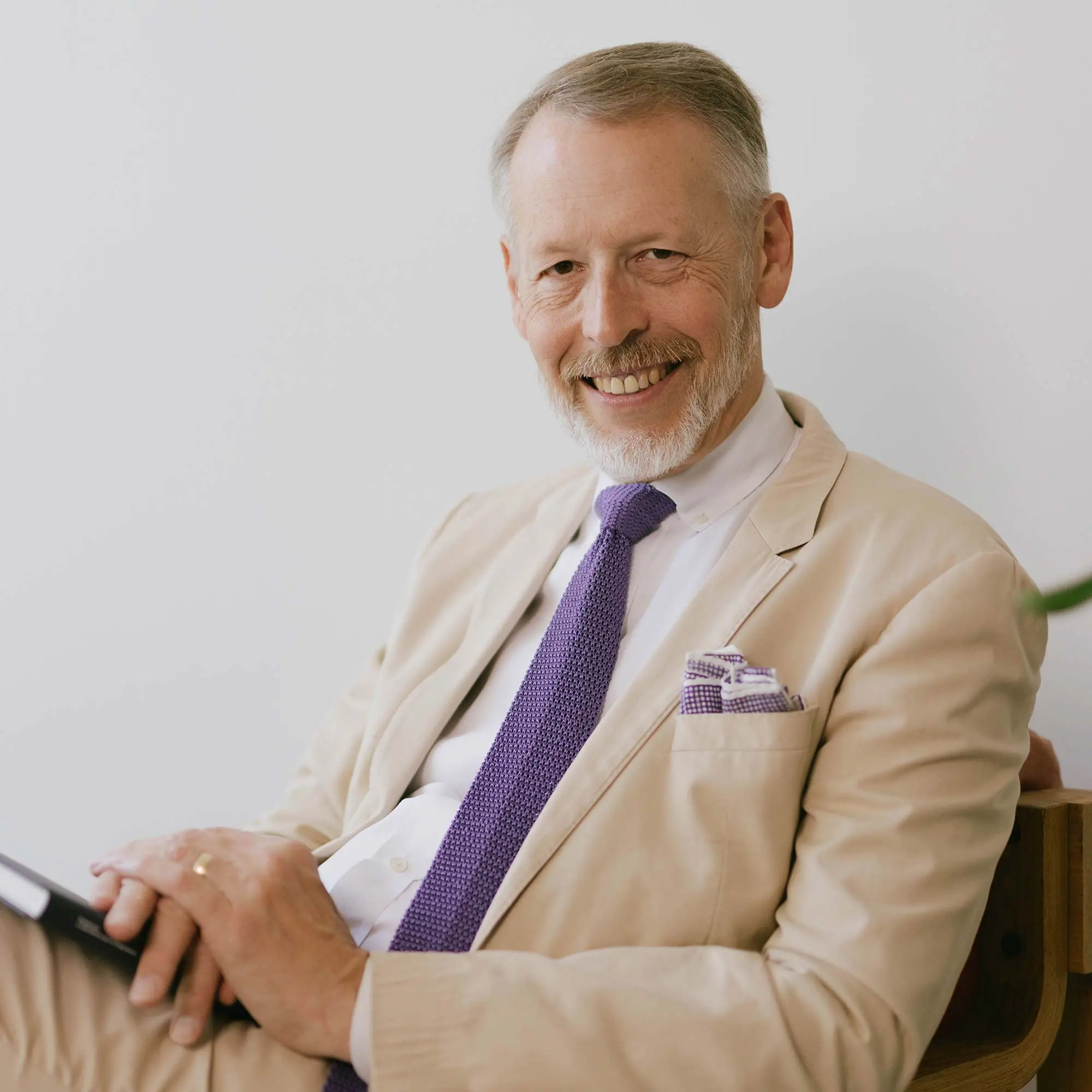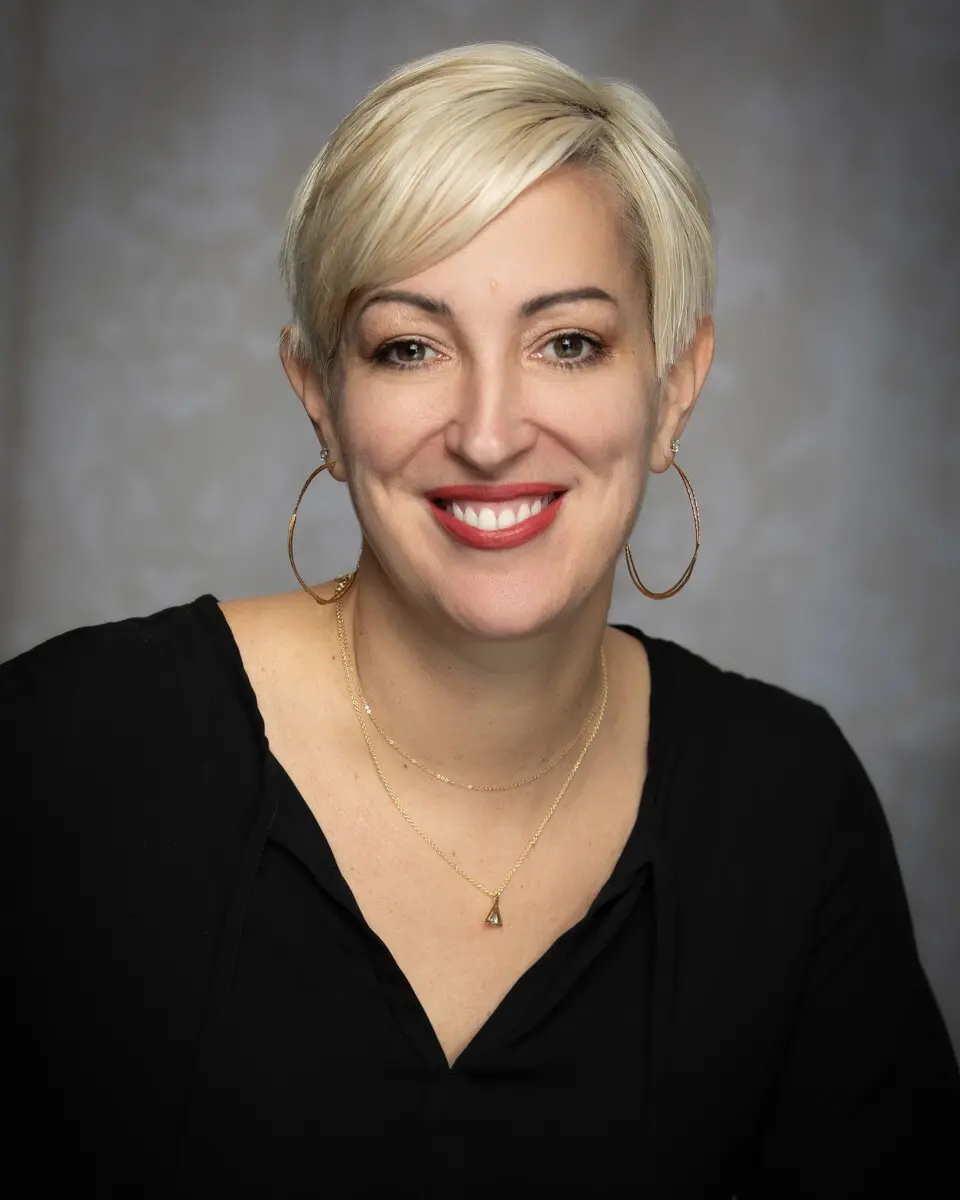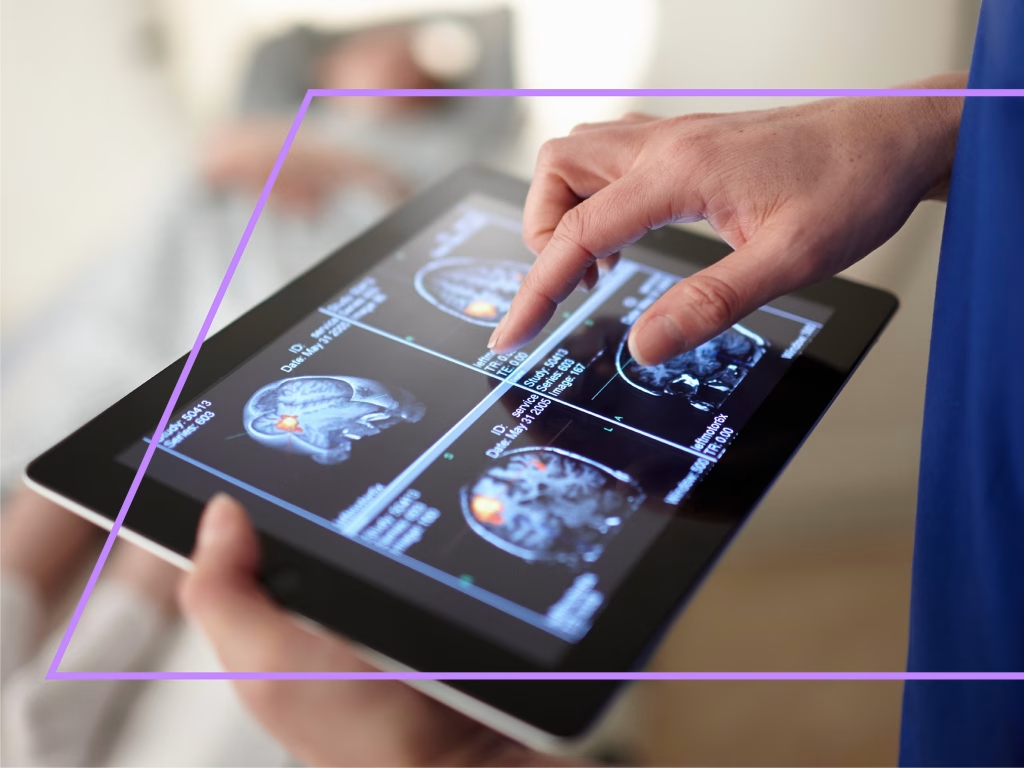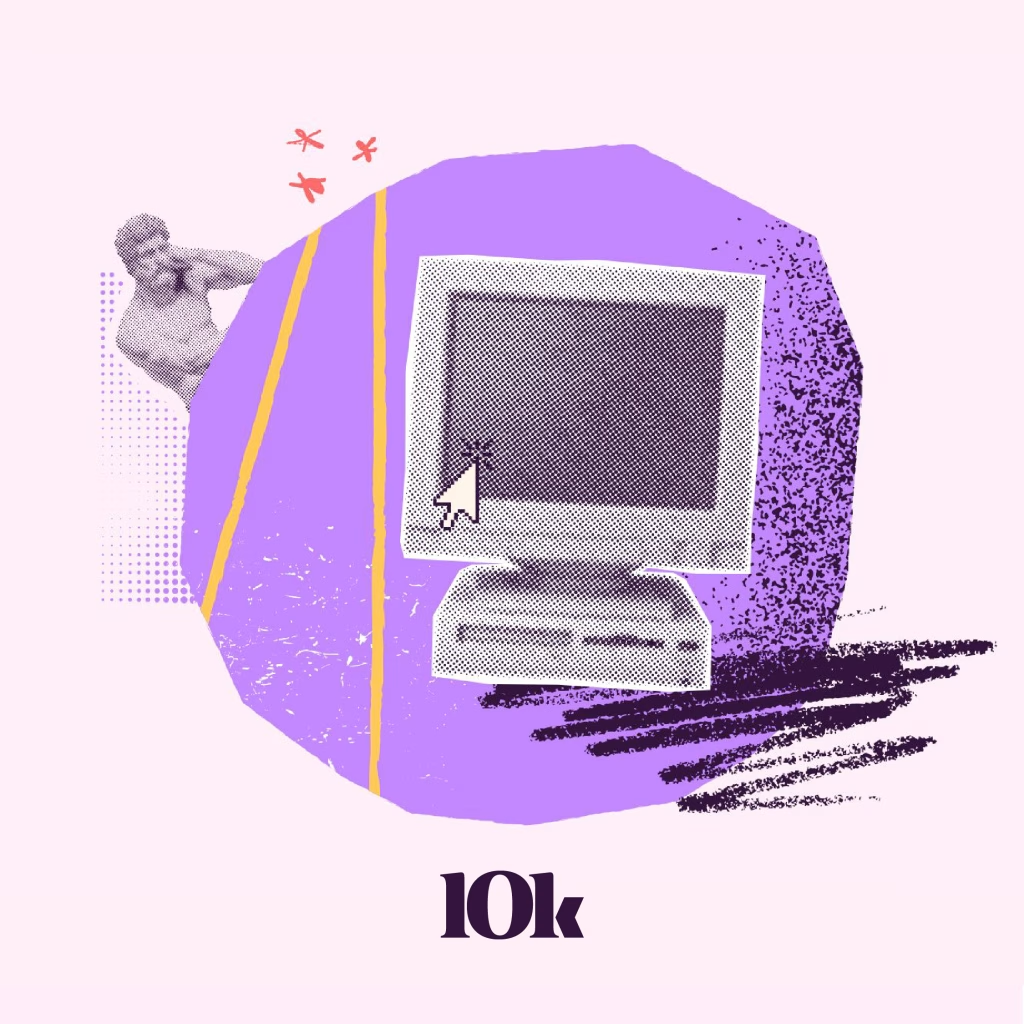We dive into a heartfelt discussion with Vervint’s Healthcare Strategist Katie Veeninga and CIO and Co-founder Jim VanderMey. Both Katie and Jim share their personal journeys within the healthcare sector and how these experiences shape their client interactions.
Together, they emphasize the importance of integrating technology with a human-centric approach in healthcare and look ahead to what they hope to see from the industry in the near future.
Tune in now to hear their stories.
Featured Guests:
We must constantly remember the humanity that is in the center of this —these are intensely human moments.
Healthcare has to be rooted in, and surrounded by the people that it’s intended to help.
Episode Transcript
Danielle Haskins: Hello and welcome to this episode of Ten Thousand Feet, the Vervint podcast. I’m Danielle Haskins, your host. Today, we’re getting a little bit personal. At Vervint, we believe deeply in putting people at the heart of everything we do. With over 20 years of experience providing IT solutions to the healthcare industry, te expertise we have provided and the work we have done has shifted along with advances in technology and client needs. But along the way, one constant has and will always remain the same for us — we are deeply passionate about providing services that put people at the heart to improve patient and provide their experiences with empathy and efficiency using it to solve meaningful challenges in healthcare.
Today I am joined by Katie Veeninga, Healthcare Strategist at Vervint with a rich history in healthcare, and Vervint CIO, Jim VanderMey, who has been at the heart of our healthcare approach since our inception. Both wanted to share their personal stories with the healthcare industry, how that led them to a career in healthcare strategy and IT and how it helps them to keep people at the center of the work we do with our clients.
View Full Transcript
Katie, thanks for joining us today. As you think about what brought you to Vervint and what has brought you to the healthcare field in general, what is your why? What makes you passionate about healthcare and keeps you going every day?
Katie Veeninga: I have been in the healthcare industry for over 20 years in a variety of different capacities. That eventually led me to consulting, and my why really starts a long time ago with my experience watching both of my parents struggle with complicated conditions that in both of their cases did lead to early deaths. And I learned a lot and saw a lot about the challenges of receiving healthcare and accessing appropriate information about healthcare to understand one’s medical condition and to make choices about one’s care. My passion for working in health care truly comes from that personal experience of seeing family members and the impact and the struggle that there can be navigating healthcare that you need and wanting to be a part of making that easier.
I began my healthcare career focused on data and analytics and the patient safety space working with Kaiser Permanente, which was a great opportunity to get to know how an integrated delivery system work and looked at process improvement through technology solutions, which has continued to be a great passion of mine. I’ve also spent a good amount of time with the Blue Cross Blue Shield organization here in the Pacific Northwest as Chief of Staff over Oregon, Washington, Idaho and Utah over our clinical organizations, focusing again both on overall clinical strategy and also how do IT and data initiatives support that clinical strategy. Over the last several years, I’ve pivoted my focus to more broad digital transformation and product strategy in the digital space for healthcare organization. I consider all of my efforts that I’m the most proud of to be a part of making healthcare more accessible to folks when they need it.
Danielle: Jim, what about you? You founded OST/ Vervint almost 30 years ago, started in healthcare even before then.
Jim VanderMey: I have also worked in healthcare for a long time, as Katie alluded to. I’ve worked in everything from home infusion therapy companies to biomedical manufacturers to a small medical practice automation systems. But, my real step into the healthcare environment was when I became an employee of Butterworth HMO, which was the precursor to Priority Health, one of our large West Michigan based health insurance companies, and so I worked at Priority prior to starting OST in 1997 and I was a Director of Technical Services. I was the first enterprise architect in that system which was part of the core health system now today, formerly Butterworth Health System, formerly Spectrum Health. At the same time that I was working at Priority Health in 1996, I had a child diagnosed with a Glioblastoma Multiforme, GBM, brain tumor. And I was navigating that process from inside the health system. I had access to a medical director, I had access to data, I had access to information about outcomes in a way that most people who are engaging with the healthcare system don’t have access to. I had the ability to go to people who do chart reviews and talk to them about what I should be looking for with a quality practitioner. And does this particular neurosurgeon have a good track record. And so, I was able to access information about healthcare and healthcare decision making at a critical moment in my life, helping my daughter seven years old at the time, navigate a life threatening illness. Just to tell you the rest of the story, she survived. She’s a mother of three now, married, and is doing well. We started OST in 1997 while she was still in active chemotherapy. Our first healthcare clients were around 2000, and so Vervint has been working in the consulting and the work of healthcare since for the last 24 years. And it’s important work, and it really is built on that experience that I had. We’ll talk more about that later about how that’s impacted Vervint as well, but that’s why I’m passionate about it. And I have filled a number of roles and directions. Consulting I’ve been a Commissioner for the Department of Health and Human Services in the state of Michigan, building out a blueprint for health for the Bridge to Better Health for how we share information to have a positive impact on the health and wellness of the citizens of the State of Michigan. So, I’ve been working at the policy level. And I’ve worked at the technical implementation level within health systems and inside of payer organizations.
Katie: I think your story about navigating your daughter’s healthcare and the fact that you were able to benefit from that insider perspective and access to some folks, like medical directors and understanding the concept of a chart review, is such an interesting point because I had that opportunity as well while caregiving for my mother, through her cancer diagnosis as well. And I did have unusual access to being able to talk to my medical director, physician friends, nurses who understood the importance of bridging my mother’s oncology care with her primary care. Which remains a very difficult and complicated process for most patients working through a cancer treatment and it continued to fuel my passion for wanting to improve that patient experience and access. So, while my father’s experience was so early on, it’s interesting that even once I started. And other people start in the healthcare field you almost see more of a why as you get more knowledgeable and more exposure to the workings of healthcare, because it makes it so much easier to see how much access to information is more difficult for folks without that privilege to harness. So, I think that’s a really great point that even we’re working within the industry and having the exposure to the technical aspects and the medical aspects, it remains difficult even for us. So how much more difficult is it for those that don’t have access to resources such as that?
Jim: And that’s a really interesting point because in 2008 there was a seminal event in our industry and that was the introduction of the smartphone. And shortly after the introduction of the smartphone, we had a major engagement with the client where we were helping to articulate how digital technology could help with the patient experience and how people could benefit from the access to information via a portable digital device, and it was a wide-ranging research project that led to a very significant technology development project that we built for a mobile app for a health system. But it was at the same time that I was going through a personal health journey as well. My father died from a stroke. There was a history of cardiac issues in my family. And so in that time frame I had a chance to, as part of this research project, have my personal genome evaluated. Created in 2009, 2010, I was an early adopter of that. I had a chance to talk to genetic medicine specialists. I had a chance to work with people who are at the cutting edge of nutrition and health and wellness. And how do you connect this massive amount of information that we have about you as a patient? Going to my primary care physician with my full genomic information and walking through that with a primary care physician in 2009 was a pretty remarkable experience. And I had a chance to see how these access to new modalities. Testing and information was available to me as a deeply informed patient and technologist that was not available to most people. And in addition to the access to information, there’s also the access to the understanding of that information so that you can make the right decisions for you at the time of care for you or your loved ones. And that led to this statement that we use at Vervint describing healthcare — that healthcare is an incredibly complex transaction because the human body is an incredibly complex data source, and the moments that are generating this are the most human of moments, and the most vulnerable moments as a patient, as a caregiver, as a parent, as a child, these are incredibly vulnerable moments, very human moments that generate a huge amount of data, and structure and when we try to reduce this down, if we try to transactionally use it, we take the humanity out of it. And in this moment, when we’re talking about AI and data around healthcare, we must constantly remember the humanity that is in the center of this, both for the providers and the patients and their caregivers — these are intensely human moments. And so that’s the point of view that we bring to bear in this when we work on the technology projects that we work on or when we’re working on the platforms that enable health systems to take the cost out of healthcare delivery, so they can devote cost and resources, financial resources to other things inside the health system.
Katie: I think that point is so important, Jim. I think it’s a fair statement to say that my passion for what I think is possible in healthcare to improve the patient experience and access to care has only grown and gotten more exciting as our technological capabilities have evolved over the past couple decades and gotten more sophisticated. My career began in data and analytics and then evolved through applying those data and analytics concepts to clinical strategy and looking at how to best support patients and members of health insurance plans through the data and insights gathered from that data that we had on hand. But as we’ve evolved particularly over the past 10 years so quickly with our digital capabilities. I think it’s all the more easier for the human to get lost in that and all the more important for us to remain focused on it and my passion and your passion, being rooted in our personal experience, I think is just a daily reminder of what an important part that plays, regardless of how sophisticated and exciting those digital capabilities are. That we have to remain focused on the human at the at the heart of the problem, we’re trying to solve.
Jim: And I think that’s such an important part of ethics, the ethos of our organization because frankly, there’s a lot of economic opportunity in healthcare and you see people gravitating towards that because of the economic opportunity. If it’s not rooted in an ethos like this, then it can be transactional and opportunistic. And we want to focus on the places where technology can provide benefit to the system and benefit to the people who are consumers of that system and to the wider population in our communities. And there’s some practical ways that this has worked out. You think about the continuity that you have as an employer for medical insurance. We believe that providing a wide variety of benefit plans to our employees is advantageous, but we don’t think that changing your medical insurance every single year is a good plan because it reduces the continuity that you need to have between your payer and your providers. And so, we encourage that kind of continuity. We also talked about having flexibility when people start at Vervint, they have a certain amount of PTO. And we also don’t force people to take time off for doctor’s appointments or caregiving appointments. And that’s just part of the ethos because we expect that life will happen and we expect that there will be medical events. Then we expect that there will be family events. And so, our first value as an organization is that we honor our employees and the people that matter most to them. So that’s worked out in part because we were birthed in these seminal moments where my partner and I, Dan Beam, we both wanted to take care of our families and the things that were important to our families.
Danielle: Katie, as you think about your path in healthcare and your journey here, how do you advise and consult your healthcare clients in a way to help them keep the human — the patient — at the center when you might be having conversations around very non-human things, like technology and data?
Katie: Honestly, something that is part of our daily work and daily conversation with our clients, it is very easy to focus on technology initiatives or goals. Thinking about exciting new capabilities like AI or something more tactical you need to achieve. For operational reasons and one of the things that Vervint brings to the table, and that’s incredibly important to me and my interaction with clients, is consistently aligning those, ensuring that those efforts are aligned with what I’ll refer to as business goals and objectives. But when I say business goals and objectives in healthcare, that should be directly correlating to the improvement to patient care or providers ability to provide care or if payers ability to provide better coverage for their or access to their members, right. So, it’s really an ongoing and consistent conversation with our clients. About how those technology initiatives and goals are aligning and supporting what they want to do to impact and improve their patient experience, their provider experience, and their member experience.
Jim: We have a company journal, and the front of the company journal, says: People at the Heart. if anyone listening, wants a copy of that, they can see that and it’s on our website. And that understanding helps us to say, how do we fit technology into human systems as opposed to humans into technology systems. Whether the humans that we’re talking about are the IT team that are looking at how they’re going to support cloud-based infrastructure in a new way. Or it’s the providers and the patients, but people have to be at the heart. And so, our fundamental organizing principle for how we engage in technology projects with our client systems is around how do we create value for the health systems, providers, members, patients, consumers. And we use some of those people oriented values as the articulation of the priorities that we’re going to go after, because if we ignore the people, if we ignore the provider experience, if we ignore the patient experience, if we ignore the IT team member experience, the technology oftentimes fails. It’s not sustainable, it’s not adopted, and you’ll see money wasted that didn’t have to be wasted. You’ll see costs incurred that didn’t have to be incurred because you didn’t think about the people you were trying to buy a technology to solve a human problem, and that introduces waste.
Danielle: So, with so many factors to keep track of and to think about, how do you know you’re getting it right?
Jim: It will always be an imperfect system because people are involved. I strive for improvement, that we will make things better. We will not make things perfect. We will never get it all right. And we will learn and we’ll take a posture of humility and we’ll learn again and we’ll get it better. I’m not looking for it to be done. I’m looking for it to get better.
Katie: So agree with that perspective and I think it informs how we work with our clients, right. What we’re trying to do with our clients is not necessarily create and implement a perfect solution. It might be that at the end, which is great, but first and foremost we’re building a relationship that is rooted in transparent and productive conversation and communication that helps us evolve with them and with their organization to achieve what they’re looking to achieve.
Danielle: Have there been any pivotal moments in your career where you’ve asked yourself like, “Is this too close to my why? Can I keep going?” And how has that fueled you?
Katie: I have not had an experience in which my work felt too personal. In fact, I’d say I’ve had the opposite experience after almost two decades working in healthcare and following the pandemic, which was a particularly difficult time for anybody working in healthcare. Just to see the details of that situation more up, up close. It was a trying time. I considered maybe I can apply my expertise outside of healthcare and I took that opportunity to explore, and I have to say that experience is what made it so clear to me that my passion and my personal why belongs directed towards healthcare and that’s really what led me to looking for an opportunity that ended up being Vervint. Knowing that my personal why is such an important part of my professional identity and what I want to achieve. And as I got to know the Vervint history and the foundation that Jim has built here at Vervint, I knew that it aligned so well with my personal life or what I do professionally related to healthcare. I would say, really at the end of the day, for me, my personal why has only become, I think more relevant and I’ve embraced how powerful it is in pursuing great work for great organizations.
Jim: You have a set of bookends here. With Katie and myself, Katie is one of the newest members of the Vervint team. I’m clearly the longest tenured member of the Vervint team and the way that you just heard Katie articulate her passion for healthcare, to me, is part of the baton passing. As I get close to my retirement and in my professional tenure, we’re creating an organization that takes these values that we’ve been talking about and carries them forward for the next generation of work. So, I really like how Katie ended this discussion. Today, and I think that the ongoing work of the healthcare practice at Vervint and the way we continue to impact materially significant organizations to bring. High quality health outcomes at lower cost.
Danielle: What is one thing you hope to see happen in the healthcare field in the next 5 years?
Katie: We talked a lot today about how important the people and humans are and the healthcare experience in general and why and how we pursue healthcare work here at Vervint. And I would say that my continued vision for healthcare over the next five years and beyond is that we have the ability to influence that focus on the person at the heart of healthcare. We will continue to see more sophisticated advancements in technologies and more exciting capabilities, like all that AI has to offer over the next several years. Those capabilities are for, not if they are not rooted in the people implementing them, the people leveraging them and accessing them. Any advance we make on the technology front end, healthcare has got to be rooted in and surrounded by the people that it’s intended to help.
Danielle: Thanks for joining us for this episode of 10,000 feet, the Vervint podcast. To learn more from our thought leaders and the services we provide at Vervint, visit vervint.com.







